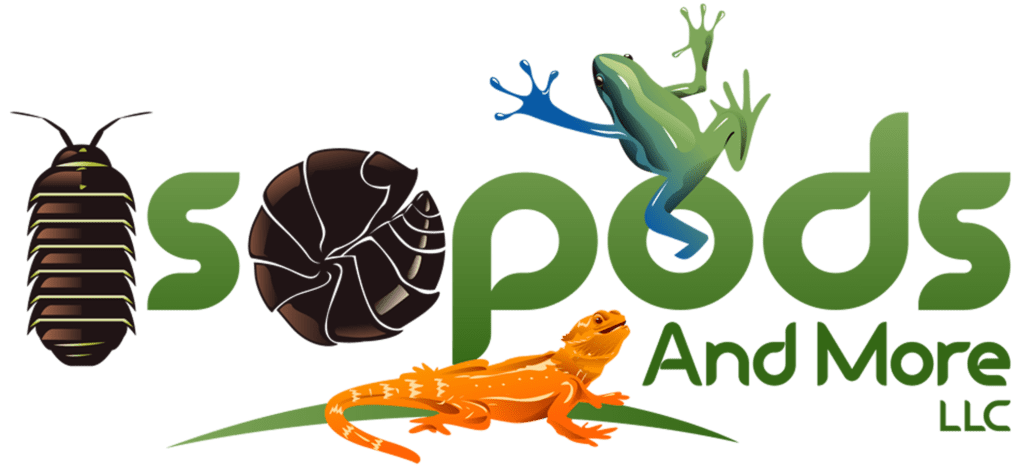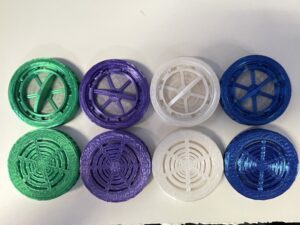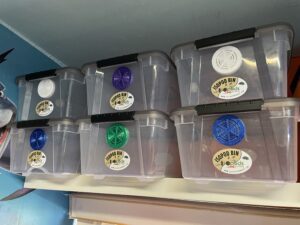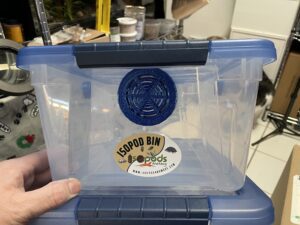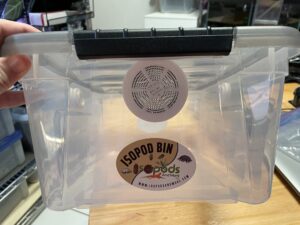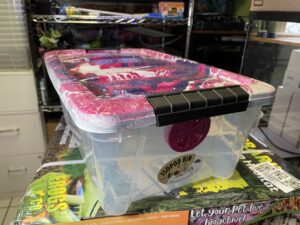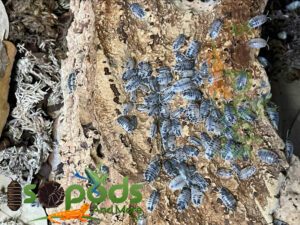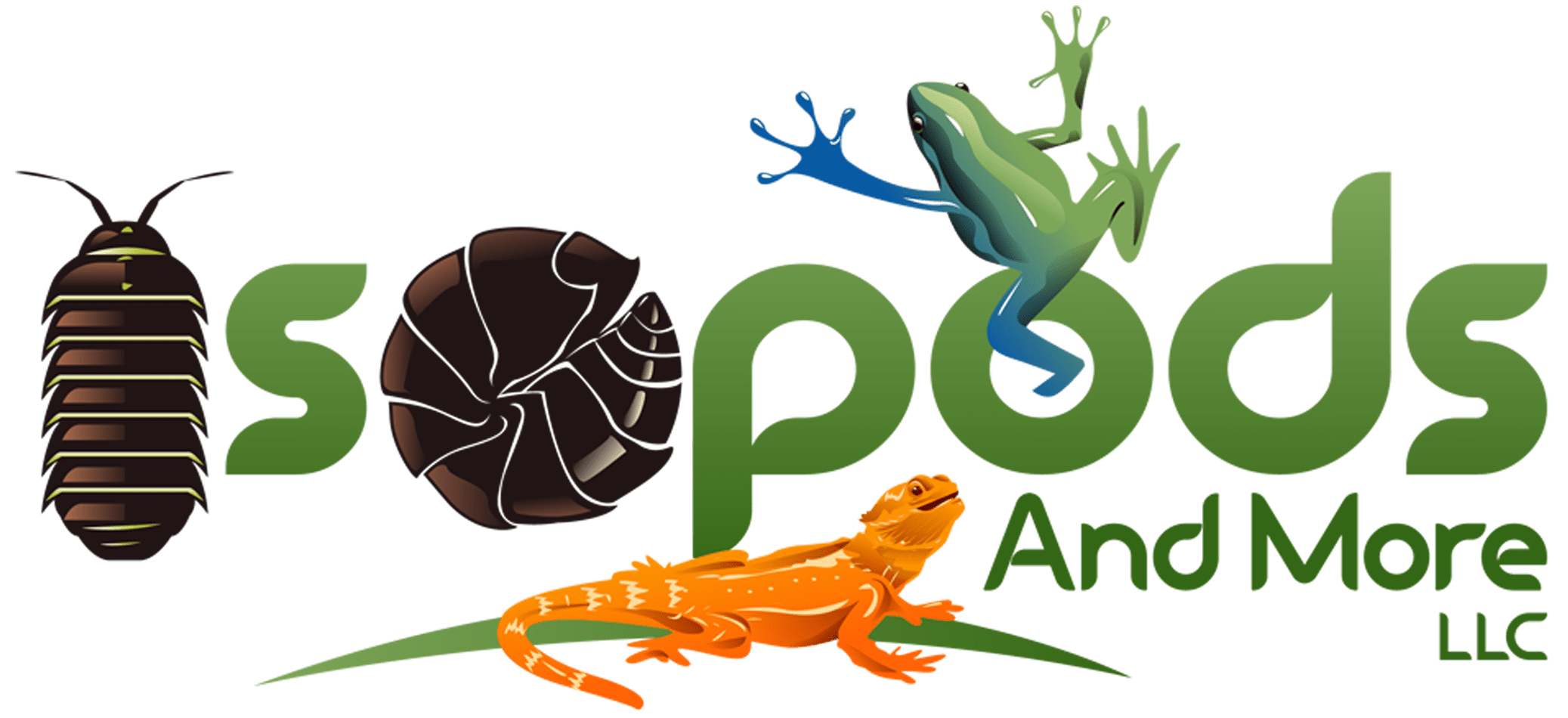Imagine having your very own cow that doesn’t moo or require an endless amount of space. Meet the incredible dairy cow isopod! In this article, we will explore the world of isopod care, focusing specifically on the fascinating realm of dairy cow isopods. Discover the ins and outs of caring for these unique creatures, including tips on breeding and maintaining their well-being. Whether you’re a seasoned isopod enthusiast or a curious beginner, this article will provide you with valuable insights into the world of dairy cow isopod care. Get ready to be amazed by these miniature cows that fit in the palm of your hand!
Housing
Enclosure size
When it comes to housing dairy cow isopods, it’s important to provide them with a spacious enclosure that allows for their natural behaviors and movements. A 10-gallon tank is a suitable size for a small group of isopods, but as the population grows, you may need to upgrade to a larger enclosure. Remember to consider the height of the enclosure as dairy cow isopods are known to climb and explore.
Substrate
The substrate of the enclosure plays a crucial role in maintaining the health and well-being of dairy cow isopods. A combination of organic materials such as coconut fiber, peat moss, and decaying wood provides a suitable environment that mimics the isopods’ natural habitat. It should have a slight dampness to it but not be waterlogged.
Temperature and humidity
Maintaining the right temperature and humidity levels is essential for the health of dairy cow isopods. These isopods thrive in temperatures ranging from 70°F to 80°F (21°C to 27°C). A hygrometer can help monitor the humidity, which should be kept around 80%. To maintain the humidity, mist the enclosure with water occasionally and provide a shallow water dish.
Lighting
Dairy cow isopods, like most isopods, do not require any specific lighting. They are primarily nocturnal creatures and prefer a dark and cozy environment. However, if you enjoy observing their activities, you can provide a low-level light source that won’t disturb their natural patterns.
Ventilation
Adequate ventilation is important to prevent the buildup of harmful gases and maintain fresh air circulation within the enclosure. Ensure that your enclosure has small, well-placed vents to allow proper airflow. This will also help regulate the humidity levels and prevent the growth of mold or mildew.
Diet
Feeding frequency
Dairy cow isopods are detritivores, meaning they primarily feed on decaying organic matter. They forage on decomposing leaves, wood, and other plant materials. As such, they require a constant supply of food. Aim to feed them every two to three days, providing a small amount of fresh decaying matter or commercially available isopod food. Regularly check for any uneaten food and remove it to prevent mold growth.
Food options
When it comes to feeding dairy cow isopods, there are various options to consider. You can offer them decaying leaves, fruits, vegetables, or even commercially available isopod food. Some popular choices include oak leaves, maple leaves, and carrot slices. Experiment with different food sources to provide a varied diet and cater to their nutritional needs.
Supplements
In addition to their main diet, dairy cow isopods can benefit from occasional supplementation. Calcium is a vital component for their exoskeleton health and breeding success. You can offer crushed eggshells or calcium-rich powder as a supplement placed in a separate dish within the enclosure. This will allow the isopods to consume it as needed.
Water
While dairy cow isopods obtain most of their required moisture from the food they eat, it’s important to provide a water source within the enclosure. A small, shallow dish filled with dechlorinated water should suffice. Make sure to change the water regularly to keep it clean and prevent any contaminants from affecting the isopods’ health.
Socialization
Group dynamics
Dairy cow isopods are known to be social creatures and thrive in groups. They enjoy living in close proximity to one another and engaging in various social behaviors. When housing them, it is recommended to keep a small colony together to promote their natural tendencies and provide them with a sense of security.
Introducing new isopods
If you plan on adding new isopods to an established colony, there are a few steps you should take to ensure a smooth integration. Firstly, create a separate temporary enclosure for the new isopods to quarantine them and observe their health. After a few weeks, if they appear healthy, gradually introduce them to the main enclosure, closely monitoring their behavior for any signs of aggression or stress.
Handling
While dairy cow isopods can be fascinating to observe, it’s generally recommended to avoid excessive handling. They are delicate creatures, and handling them too much or with rough hands can cause stress or damage to their exoskeletons. If handling is necessary, make sure to wet your hands slightly to avoid dehydrating the isopods and handle them gently.
Health and Hygiene
Monitoring health
Regular monitoring of your dairy cow isopods’ health is crucial to ensure their well-being. Check for any signs of illness, such as lethargy, discoloration, or unusual behavior. If you notice any concerns, it’s best to consult a knowledgeable isopod enthusiast or a veterinarian experienced with invertebrates.
Cleaning the enclosure
Maintaining a clean enclosure is essential to prevent the buildup of bacteria, mold, and parasites. Regularly remove any uneaten food, feces, or debris from the enclosure using tweezers or a small scoop. This will help maintain a healthy environment for your isopods.
Preventing diseases and parasites
To prevent the spread of diseases and parasites, it is important to practice good hygiene. Avoid introducing contaminated materials, plants, or animals into the isopod enclosure. Quarantine any new additions before introducing them to the main colony. Additionally, keeping the enclosure clean and providing a suitable environment for the isopods will reduce the risk of diseases or parasites affecting their health.
Breeding
Selecting breeding pairs
Breeding dairy cow isopods is an exciting and rewarding experience. When selecting breeding pairs, it is advisable to choose healthy, mature individuals. Look for isopods with vibrant coloration, active behavior, and well-formed exoskeletons. By selecting optimal breeding pairs, you increase the chances of producing healthy offspring.
Creating a breeding setup
To encourage successful breeding, create a separate breeding setup within the main enclosure. Provide ample hiding spots, such as moss or leaf litter, and moist areas for egg deposition. Maintain the temperature and humidity levels needed for optimal breeding conditions. Regularly monitor the breeding setup for eggs and carefully transfer them to a separate container to incubate.
Egg incubation
Dairy cow isopod eggs require specific conditions for successful incubation. Transfer the eggs to a separate container with a suitable substrate, such as damp sphagnum moss. Maintain the desired temperature and humidity levels, ensuring proper ventilation. Monitor the eggs closely for signs of fungal growth or any abnormalities, and remove any compromised eggs to prevent contamination.
Caring for newborns
Once the eggs have hatched, it’s important to provide appropriate care for the newborn isopods. Keep them in a separate container with a suitable substrate, similar to that of the main enclosure. Offer small food sources and maintain the required temperature and humidity levels. As the isopods grow and molt, periodically separate them into larger containers to accommodate their increasing size.
Growth and Development
Molting process
As isopods grow, they undergo a molting process to shed their exoskeleton. It’s crucial to provide a suitable environment that allows for successful molting. Ensure the enclosure has ample hiding spots and sufficient substrate to allow the isopods to burrow and shed their exoskeletons in privacy. After molting, the isopods require time to harden their new exoskeletons before becoming fully active again.
Isopod size and lifespan
Dairy cow isopods start small, but with each molt, they grow in size. On average, they can reach a length of around 1 centimeter, depending on the species. The lifespan of dairy cow isopods varies, but they typically live for about 2 to 4 years in optimal conditions. Providing a proper diet, temperature, and suitable environment can contribute to their longevity.
Sexual maturity
Isopods reach sexual maturity at different stages, depending on their species and environmental conditions. On average, dairy cow isopods become sexually mature between 6 and 12 months of age. Signs of sexual maturity include the development of secondary sexual characteristics and the ability to reproduce. Patience is key when waiting for your isopods to reach this important milestone.
Common Issues and Troubleshooting
Escape prevention
While dairy cow isopods are not known for their agility, it’s important to ensure their enclosure is escape-proof. Secure the lid tightly to prevent any gaps or openings that they could squeeze through. Regularly check the enclosure for any potential escape routes and make necessary adjustments to keep your isopods safely inside.
Excessive moisture or dryness
Maintaining the right moisture balance is crucial for the health of your dairy cow isopods. Too much moisture can lead to mold or bacterial growth, while excessive dryness can cause dehydration in the isopods. Monitor the moisture levels regularly, adjust the misting frequency if needed, and provide a water dish to help regulate the humidity.
Overcrowding
As your dairy cow isopod colony grows, monitoring the population density becomes important. Overcrowding can lead to increased competition for resources and potential stress. If you notice signs of overcrowding, such as aggression or lack of food availability, consider separating some isopods into a new enclosure to ensure their well-being.
Unhealthy behavior
If you observe any unhealthy behaviors or signs of distress among your dairy cow isopods, it’s crucial to investigate and address the issue promptly. Unusual lethargy, loss of appetite, or abnormal coloration can be signs of underlying health problems. Consult with experienced isopod enthusiasts or a veterinarian specializing in invertebrates for guidance and potential treatment options.
Isopod Species-Specific Care
Specific considerations for dairy cow isopods
Dairy cow isopods, also known as Porcellio sp. “Dairy Cow,” have specific care requirements that should be taken into consideration. They thrive in a slightly cooler temperature range, between 65°F and 75°F (18°C and 24°C). Additionally, they appreciate a slightly drier enclosure compared to other isopod species. Take these factors into account when setting up the ideal habitat for your dairy cow isopods.
Isopod Enthusiast Community
Joining forums and groups
If you’re passionate about caring for dairy cow isopods or isopods in general, consider joining online forums and social media groups dedicated to isopod enthusiasts. These communities are a great platform to connect with fellow isopod enthusiasts, exchange knowledge, and seek advice on any concerns or questions you may have.
Sharing experiences
Participating in the isopod enthusiast community allows you to share your experiences and learn from others. You can contribute by posting photos, providing care tips, and sharing interesting observations about your dairy cow isopods. Celebrate the joy of isopod keeping with fellow enthusiasts who appreciate these fascinating creatures.
Seeking advice
The isopod enthusiast community is a valuable resource for seeking advice and guidance. If you encounter specific challenges or have questions about your dairy cow isopods, don’t hesitate to reach out to experienced members. They can offer valuable insights, troubleshooting tips, and suggestions to help you create the optimal conditions for your isopods’ well-being.
Conclusion
In conclusion, successfully caring for dairy cow isopods requires attention to their housing, diet, socialization, health, breeding, growth, and troubleshooting common issues. Providing them with a suitable enclosure size, appropriate substrate, and optimal temperature and humidity conditions is crucial. Offering a varied diet, occasional supplements, and clean water ensures their nutritional needs are met. Remember to consider their social nature, handle them with care, and monitor their health regularly. Breeding and caring for newborn isopods requires proper selection of breeding pairs, creating a designated breeding setup, incubating eggs, and providing care for the young. Understanding their growth and development stages, typical lifespan, and sexual maturity will contribute to their overall well-being. By addressing common issues and troubleshooting concerns promptly, you can ensure a healthy environment for your dairy cow isopods. Keep in mind the species-specific care requirements for dairy cow isopods and consider joining the isopod enthusiast community to learn, share, and seek advice. Now that you have a comprehensive understanding of caring for dairy cow isopods, it’s time to embark on this exciting journey and provide these unique creatures with the love and care they deserve.
